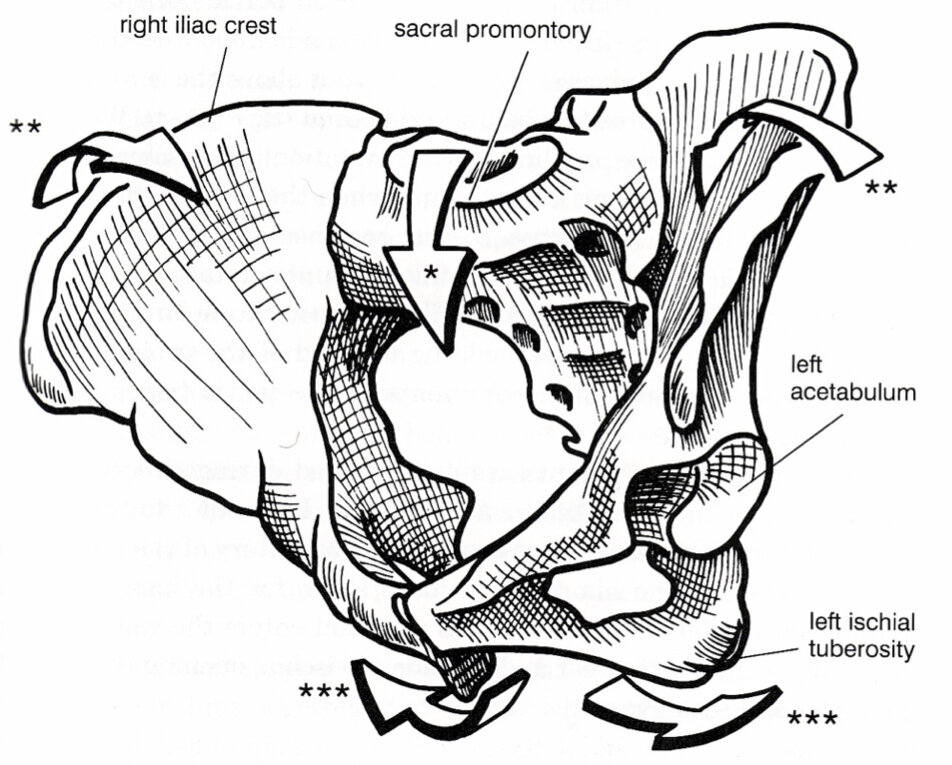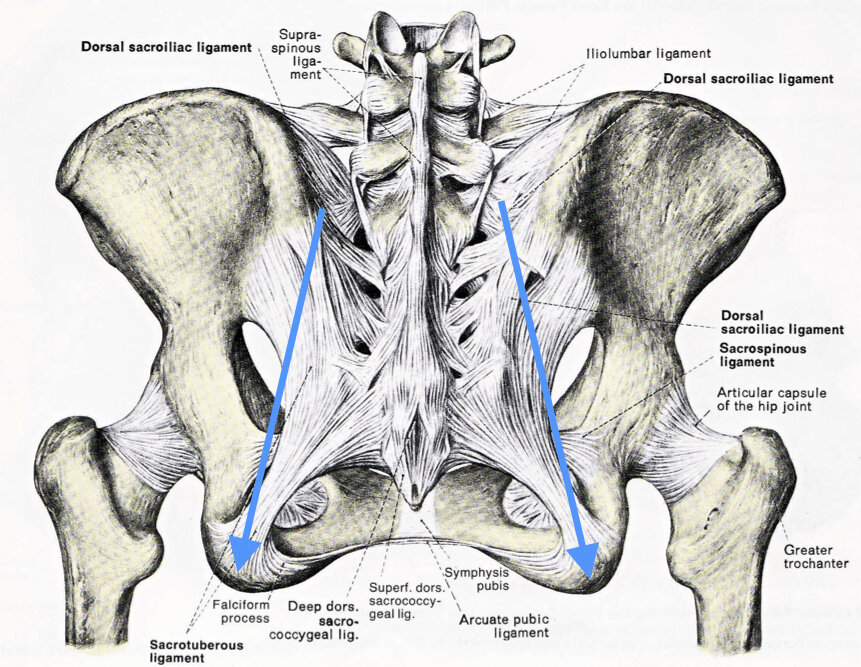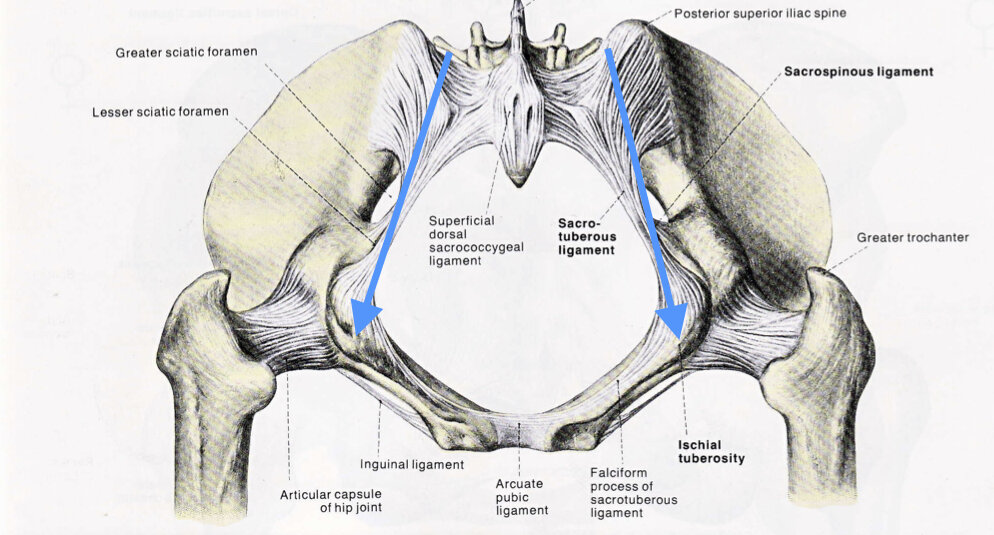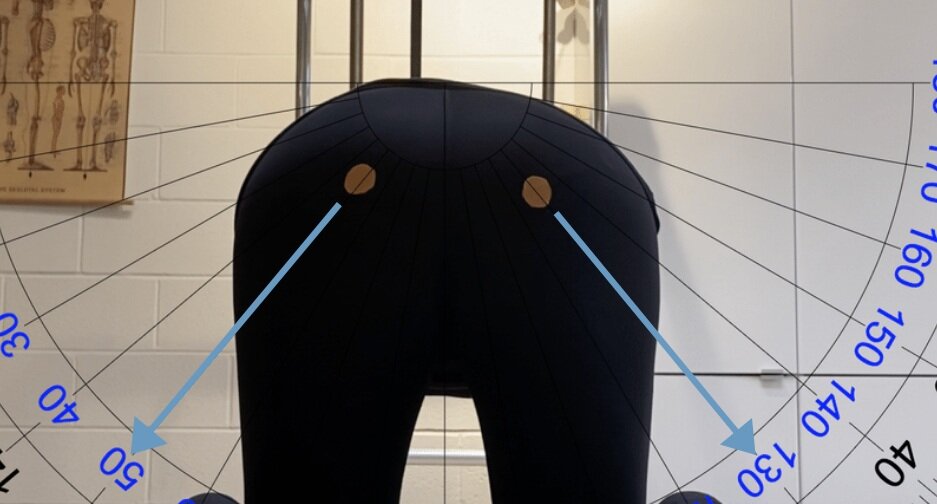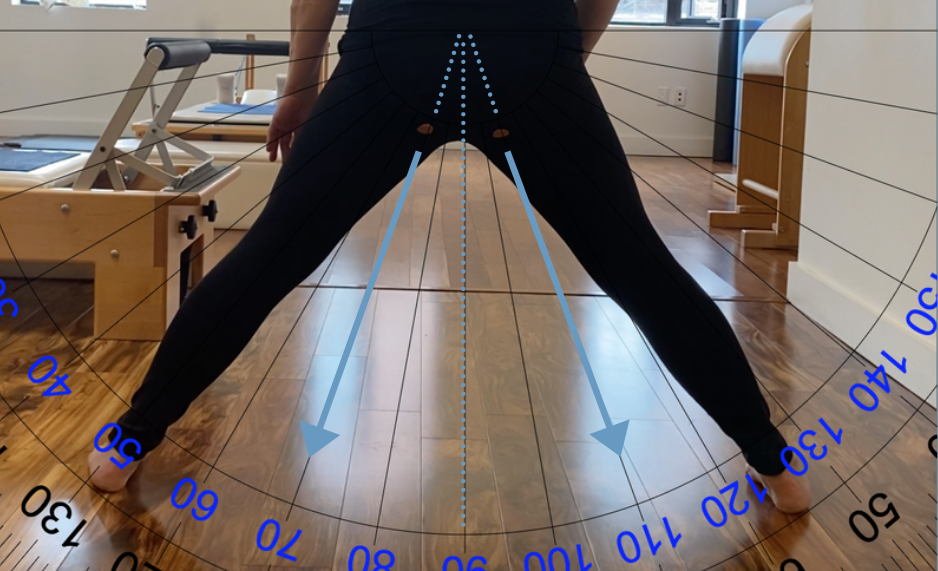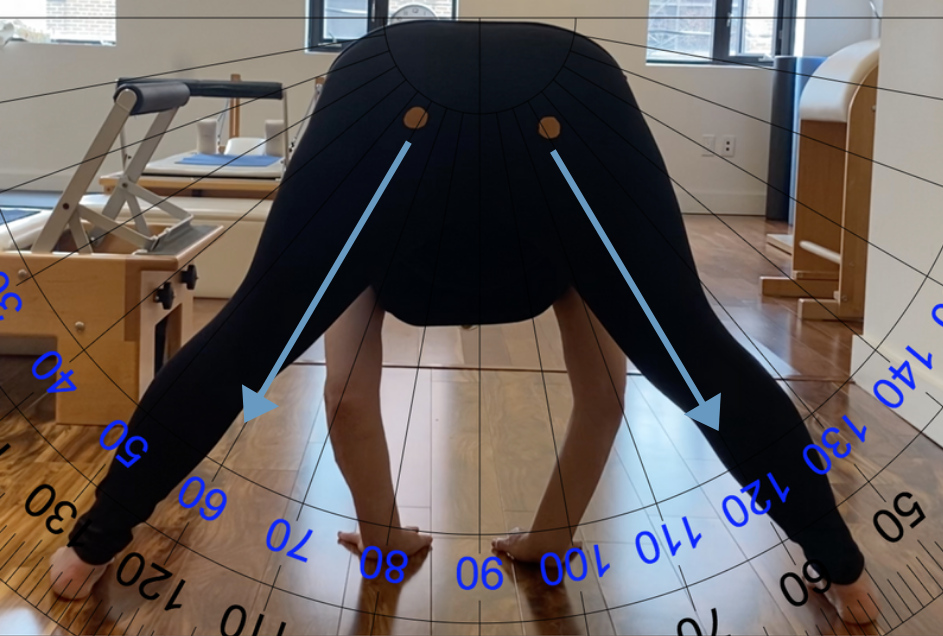DO THE SITTING BONES WIDEN AND NARROW?
So….there seems to be a big disconnect between different factions of the manual therapy and movement worlds as to whether the small amount of movement available at the sacroiliac joint is significant. Does this translate into the sitting bones widening and narrowing with movement and is this important?
The picture at top left above (Kapandji Physiology of the Joints) is showing pelvic inflare (the front hip bones coming together and the sitting bones widening) and sacral nutation (the top of the sacrum tipping forward as the tail lifts back). This is no longer thought to be important in some manual therapy circles as there is only a few degrees of movement at the sacroiliac joint. Inflare (front hip bones together, sitting bones wide) / nutation and outflare (front hip bones wide, sitting bones together) / counter-nutation are triplanar movements of the innominates (pelvic halves) and sagittal plane movement (front / back) of the sacrum and coccyx (tail bone). Teaching these movements have been taken out of some manual therapy teaching curriculums. Students learn only larger pelvic movement such as anterior and posterior rotation (tipping forward and backward of the two pelvic halves and sacrum as a unit).
In my opinion, as both a manual osteopath and a longtime movement teacher, we are doing our patients a grave disservice by not teaching them these movements. The few degrees of movement at the sacroiliac joint translates into a larger degree of movement at the sitting bones. This is physics. If you take a cone and roll it on a surface the wider end will move more. In the middle picture and the picture on the right, arrows have been placed from the sacroiliac joint to the sitting bones. The sacroiliac joint does not move like a cone but the end result is the same. In the middle picture (Toldt Human Anatomy) the pelvis is in an upright position. In the picture on the right (Toldt Human Anatomy) the pelvis is forward flexed at the hip and you are looking at the pelvis from an inferior view.
Let’s talk about Cat / Cow which can be taught many different ways. It can be taught as a spinal initiated flexion and extension exercise - centrally initiated from the middle of the spine, initiated from head to tail, initiated from tail to head or initiated from head and tail at the same time. It can also be taught as an exercise to improve pelvic inflare with sacral nutation and pelvic outflare with sacral counter-nutation. In the version of Cat / Cow pictured below, I have initiated from the sitting bones and used a protractor to measure the angle change with Cow widening sitting bones (pelvic inflare with sacral nutation) in the picture on the left, and Cat narrowing sitting bones (pelvic outflare with sacral counter-nutation) in the picture on the right. Inflare and outflare are named by the position of the iliac crests / ASIS - closer to midline during inflare, away from midline during outflare.
I would have loved to have done this in a squat but it would have been a very awkward camera set-up. But you should try this in a squat: keep your sitting bones together as in the picture of cat on the top right. Can you do a squat to the floor (only if knees permit) without allowing your sitting bones to widen? Is it comfortable? You may need to use a wall so that it is easier to monitor your own sitting bones with your fingers. Do they widen as you squat and narrow as you come out of the squat? Are you hyper-extending higher up your spine in your thoracolumbar region?
Above are pictures of a Wide Legged Forward Bend / Prasarita Padottanasana. For most people this is the easiest place to feel the sitting bones widen as you flex / fold forward at the hips (pelvic inflare with sacral nutation) as in the picture on the right. Can you feel your sitting bones narrow (pelvic outflare with sacral counter-nutation) as you come up? As an experiment try this: do not allow your sitting bones to widen and then flex / fold forward at the hips. Can you do this without rounding your lumbar spine?
More on this in future blog articles on why this is important both from a movement and manual osteopathic perspective. Until then can you feel these movements on yourself?
